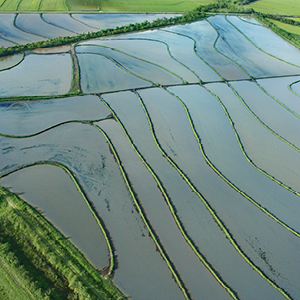After ratcheting back spending during the recession, households have started shopping again. But with unemployment still high and wages barely budging, Americans remain sensitive to shocks, such as higher food and energy prices. Private-label products are growing at double-digit rates and key national brands are losing market share.

|
In April 2011, gas stations reported the biggest jump, with sales rising 2.7%. Grocery stores saw sales rise 1.5%. Spending at auto dealers, clothing stores and non-store retailers, which are mainly online stores, also increased. Sales ticked down 0.1% at restaurants and bars, which are often cited as a barometer of the willingness of households to splurge. Consumers are not being frivolous with their money.
With ethanol, exports and corn byproducts usage consuming an ever-increasing portion of the supply, corn prices are again hovering around the record levels of 2008. With feed representing over 33% to 50% of the cost of raising an animal, this has put serious cost pressure on food producers in the animal protein sector to raise prices. In April 2011, the cost of food rose 0.3% and energy prices increased 2.5% last month.
The flooding and weather forecasts have produced a big topic of discussion. Unrelenting rains have meant unprecedented delays in planting corn. Concerns include whether the total acreage-pie is shrinking and how much of which crop is being reduced. Planting progress will be essential as the calendar approaches several crucial planting dates.
Concerns also center along the Mississippi River (corn, cotton and rice planting), as well as several states in the eastern and southern corn belt where progress lags
(Indiana, Ohio, Kentucky). There are northern states (North Dakota, South Dakota, Minnesota) where rain, flooding and cool temperatures have combined to raise concerns about spring wheat, corn and soybean planting. This is a moving target, but one that bears watching, as some commodities, especially corn, cannot stand to have acreage reduced by much.
Regarding soybeans, supplies remain critically short. The 2011-2012 soybean output is projected to decline 1.3% to its smallest level in three years. Use estimates are similar to 2010-2011, which is expected to cause soybean supplies to remain critically short next year. World soybean supplies are expected to modestly tighten yet still be historically adequate.
The combination of high corn and soybean prices along with the rising cost of transporting food and food ingredients will likely continue to contribute to higher food prices for consumers long-term. Retailers and foodservice operators are doing their best to keep prices low to satisfy their consumers. However, with the forecasted commodity markets, their ability to maintain low prices will be challenging.
With producers already pressed to stay above water, the next few months will be challenging to all.





Report Abusive Comment